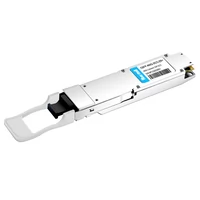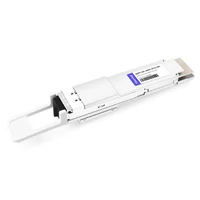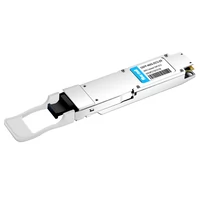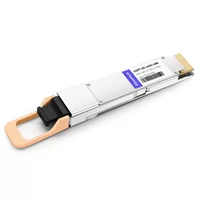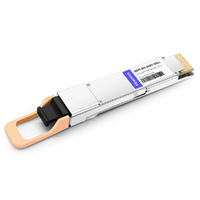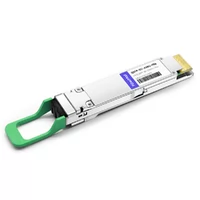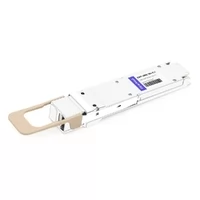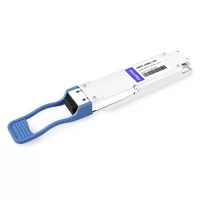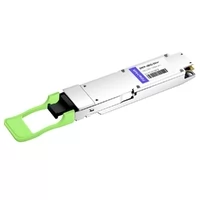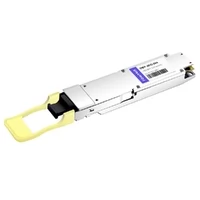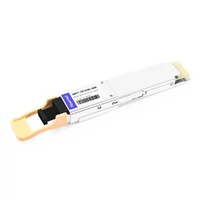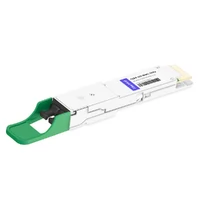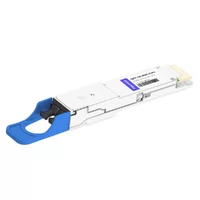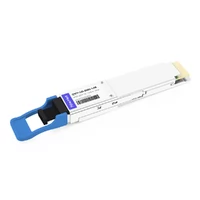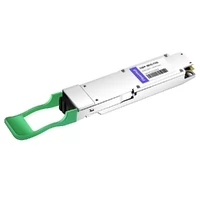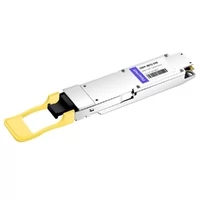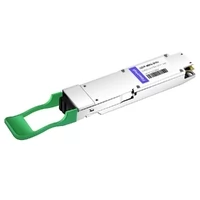FiberMall experts discuss the pluggable optical modules that are moving towards the Terabit era and 400G Long Haul & 800G ZR attract much attention.
Some have dubbed the 2023 Optical Fiber Communications Conference (OFC) as the time of Terabit for the conference introduces the trials and announcements of new 1.2Terabits/s (T) coherent modules, such as FiberMall Coherent Interconnect Module 8 (CIM 8) and the first pluggable 1.2T coherent optical module.
Internet service providers (ISP) are adopting higher speed interfaces, and since last year’s conference we have continued to see growth of applications and 400G QSFP-DD pluggable modules into new markets. Coherent pluggable components have been moving towards short distances for some time, but customers are now increasingly interested in using them for long-distance applications traditionally served by embedded coherent modules. The market of high-performance embedded modules remains to be robust today, but we expect the pluggable trend to continue in the future because service providers take advantage of its low power, small size, and performance wherever possible. The standards body is seeking interoperability modes defining 800G and higher-performance 400G for next-generation MSA pluggable optics.
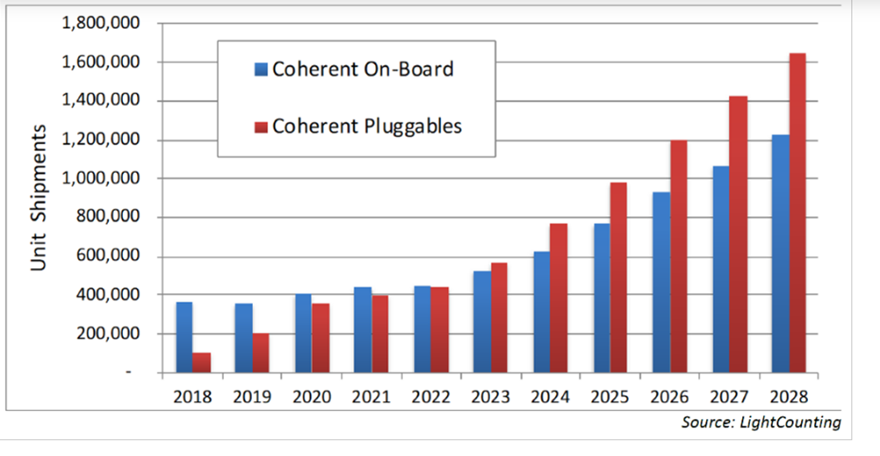
Coherent pluggable ports are expected to exceed embedded ports by 2023
FiberMall participated in OFC Conference and interoperability demonstration this year. The following is a review of three sessions presented in the Market Watch Theater. These sessions highlighted the trend towards higher speed interfaces and the expected transition from embedded to pluggable modules, including progress in industry standardization. Lewis William, Senior Director of Technical Marketing at FiberMall, presented an update on the standardization progress of 800G ZR and 800G LR at the OIF Forum. Lewis highlights the rapid success of 400G pluggable technology and what’s next for standards bodies. 400G development continues in three areas.
The first is to support continuous deployment of OpenZR+ and Open ROADM modes of high transmission power 400G ZR+ QSFP-DD pluggable. These modules extend the use cases of the 400G QSFP-DD pluggable to metro and regional ROADM networks and increase transponder density in transport equipment. The second one is 400G ER1, with the aim of 40km point-to-point application. The third area is the standardization and development of 400G long-distance.
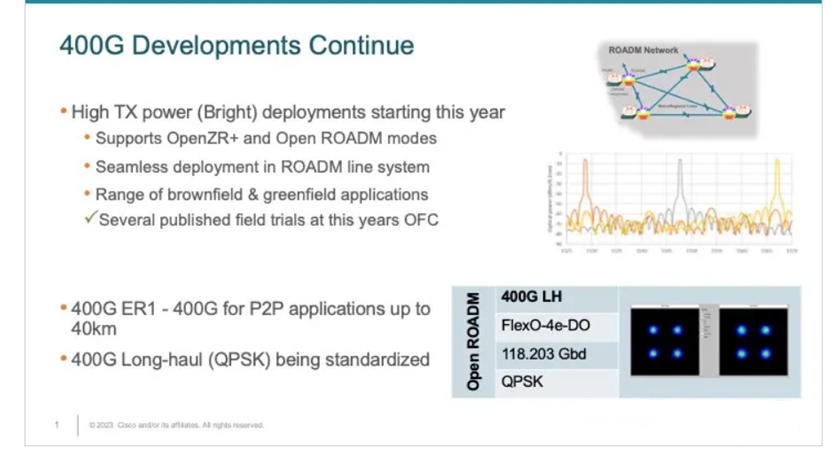
400G developments continue with high TX power 400G ZR+,400G ER1, and 400G long haul pluggable modules
The current focus of standardization is on 800G LR/ZR and Open ROADM products. ISPs are looking for higher baud rate pluggable products to take advantage of improvements in cost and power consumption. Increasing baud rates has been an effective way to achieve more cost-effective fiber optic networks by reducing the number of fibers required to support a given transmission capacity.
Next, Lewis focused on 800G ZR standardization and highlighted the similarities and differences between these considerations and 400G ZR. 800G ZR is likely to be used in different cases depending on the ISPs, and some of whom are waiting for 1.6T solutions. The key assumption is that 800G ZR will include 16QAM modulation at 118Gbaud, which is double the baud rate of 400G ZR. On the receiver side, Open Forward Error Correction, or oFEC, has been selected to improve optical signal-to-noise ratio (OSNR) sensitivity, with a higher minimum input power of 118Gbaud. On the transmitter side, it is recognized that the 400G market now includes both amplified and unamplified configurations, and that when 800G ZR co-exists with 400G ZR on the same line system, the transmit power is 3dB higher. Lewis also highlighted three different transmitter power ranges, with each option having use cases that bring value to the market. These include:
1. -11 to -14dBm: lowest cost
2. -7 to -11dBm: coexistence with 400ZR
3. 0 to -7dBm: coexistence with traditional DWDM
Anthony Gachanja, Pluggable Modules Product Manager at FiberMall, says the 400G ZR/ZR+ success is partly due to standardization and interoperability, leading to the use of 400G pluggable modules in a wide range of choices. Standardization of optical network technology helps ISPs by providing simplicity, interoperability and volume-driven costs. Anthony explained that in the 400G pluggable market, standardization started with
400G ZR and progressed rapidly as ISPs demanded higher performance. This led to the creation of Open ROADM and OpenZR+MSA. So, today we see 400G pluggable devices being used in a wide variety of applications, using the same component technology in every form factor.
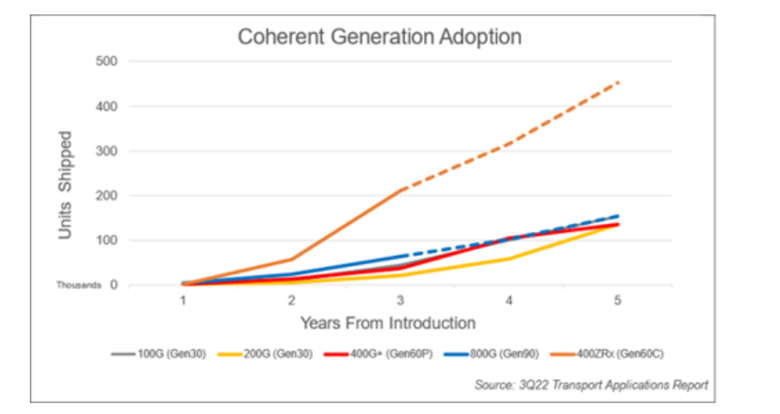
400G pluggables have been the fastest ramping coherent technology to date
Anthony also discusses how the 400G ZR/ZR+ leverages advances in co-package technology and how these developments now expand to future product development using the same common platform utilizing silicon photonics. For example, the same packaging technology FiberMall used in its highly successful 400G pluggable products is now being used in its CIM 8 modules, which enables pluggable performance-optimized solutions running at speeds up to 140Gbaud. FiberMall will continue to take the same approach for future generations of products such as the 800G and 1.6T modules.
Next, Anthony shared how the industry is preparing for 800G pluggable, which is expected to be deployed for the first time in 2024. Currently, 800G ZR/LR is being defined in OIF, as Lewis shared in his OIF update, with 118Gbaud 16QAM modulation. 800G ZR+ will require a standardized media interface specification, which may be 131Gbaud PCS modulation. FiberMall’s silicon photonics can support all transmission rates recommended for 800G ZR and 800G ZR+. The high transmit power version can support pluggable modules similar to 400G Bright ZR+ high transmit (TX) power.
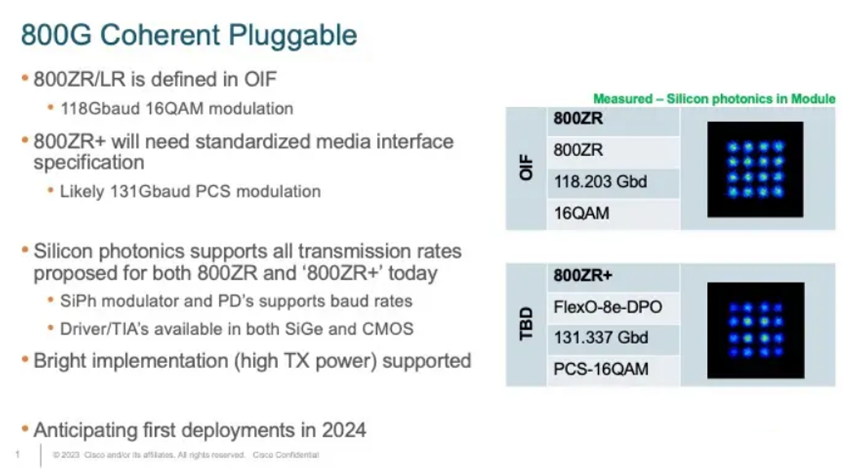
800G will likely come in ZR, ZR+, and LR version
As for 1.6 coherent pluggable modules, Anthony suggests that such modules will not be needed until 2025 or later. He believes that 240Gbaud single-carrier pluggable module is feasible and can have the best potential cost structure, with fewer optical components compared to a multi-carrier approach. Developing these products required overcoming several engineering challenges, including signal integrity, power and thermal design,
but the industry has good examples to follow.
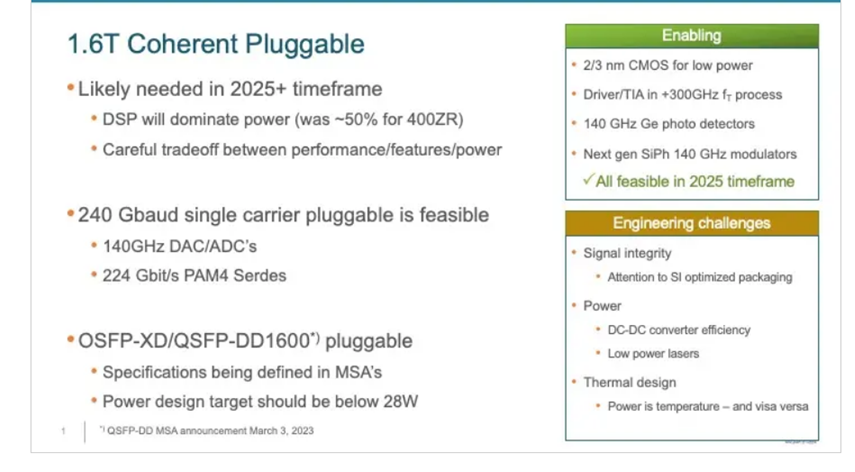
1.6T coherent pluggables are expected to emerge in the 2025+ timeframe
Mike Lazaridis, Director of Product Management and Strategy at FiberMall, gives an overview of the performance-focused coherent module. These modules are to help reduce the capital and operational expenditure (CAPEX, OPEX) of ISPs. Cost per bit and regeneration times of optical modules are the main CAPEX drivers. Power consumption, footprint and manageability are key OPEX drivers. Key to solutions is to develop functions such as probabilistic constellation shaping (PCS), adaptive baud rates and advanced compensation algorithms. These technological innovations provide service providers with unprecedented transport flexibility to match their network architecture, optimize fiber utilization and simplify deployment. Mike also discusses the impact of approaching the Shannon limit, where the spectral efficiency gain is only incremental. His emphasis has been on reducing cost, power consumption and footprint. This will require doubling the baud rate of each generation, designing efficient network architectures, and leveraging the advantages of silicon photonics and advanced packaging technologies that can be used across multiple generations of products.
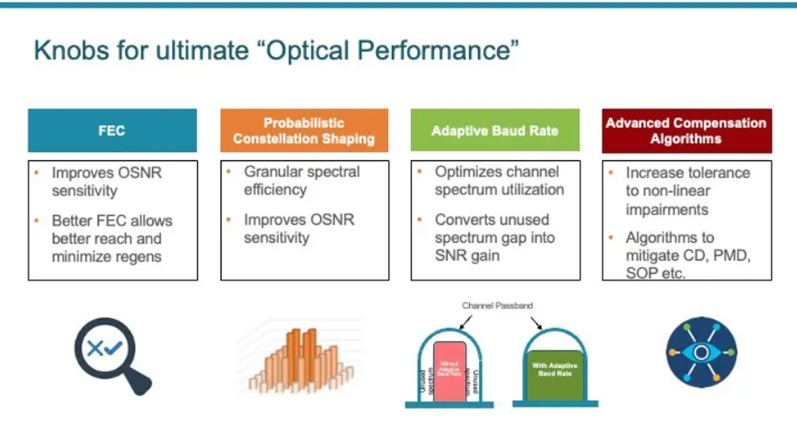
Knobs for ultimate “optical performance”
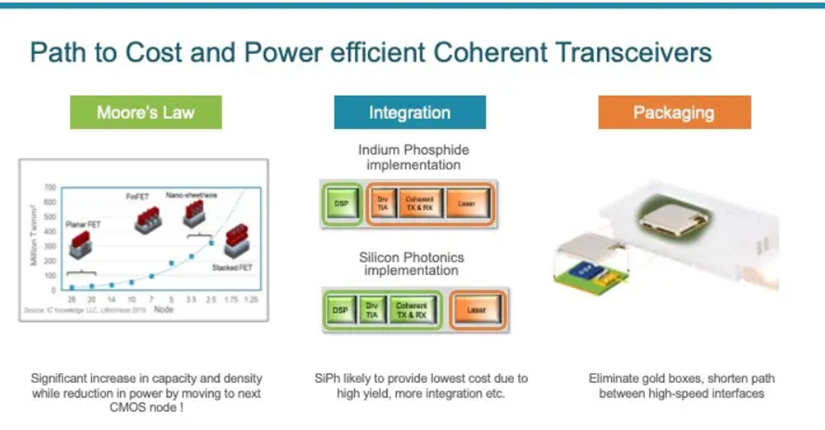
Path to cost and power efficient coherent transceivers
As mentioned earlier, these “terabit era” products headed by FiberMall CIM 8 modules were highlighted at this year’s OFC. China Mobile, NYSERNet, and Windstream Wholesale have announced field trials. By utilizing a common development methodology of 400G pluggable modules and FiberMall proprietary DSP algorithms, Fibermall brings operational advantage of pluggable modules into the performance-focused multi-ride segment. FiberMall believes the industry is likely to continue the trend moving from performance-centric towards pluggable modules to take advantage of high performance and energy efficiency. This could include the development of high-performance 400G long-reach pluggable and 800G ZR+ up to 131Gbaud.
Related Products:
-
 OSFP-400G-DCO-ZR+ 400G Coherent OSFP-DCO ZR+ C-band Tunable Optical Transceiver Module
$7000.00
OSFP-400G-DCO-ZR+ 400G Coherent OSFP-DCO ZR+ C-band Tunable Optical Transceiver Module
$7000.00
-
 QSFP-DD-400G-DCO-ZR+ 400G Coherent QSFP-DD DCO C-band Tunable Optical Transceiver Module
$6500.00
QSFP-DD-400G-DCO-ZR+ 400G Coherent QSFP-DD DCO C-band Tunable Optical Transceiver Module
$6500.00
-
 OSFP-400G-DCO-ZR 400G Coherent OSFP-DCO ZR C-band Tunable Optical Transceiver Module
$7000.00
OSFP-400G-DCO-ZR 400G Coherent OSFP-DCO ZR C-band Tunable Optical Transceiver Module
$7000.00
-
 QSFP-DD-400G-SR8 400G QSFP-DD SR8 PAM4 850nm 100m MTP/MPO OM3 FEC Optical Transceiver Module
$149.00
QSFP-DD-400G-SR8 400G QSFP-DD SR8 PAM4 850nm 100m MTP/MPO OM3 FEC Optical Transceiver Module
$149.00
-
 QSFP-DD-400G-SR4.2 400Gb/s QSFP-DD SR4 BiDi PAM4 850nm/910nm 100m/150m OM4/OM5 MMF MPO-12 FEC Optical Transceiver Module
$900.00
QSFP-DD-400G-SR4.2 400Gb/s QSFP-DD SR4 BiDi PAM4 850nm/910nm 100m/150m OM4/OM5 MMF MPO-12 FEC Optical Transceiver Module
$900.00
-
 QSFP-DD-400G-LR4 400G QSFP-DD LR4 PAM4 CWDM4 10km LC SMF FEC Optical Transceiver Module
$600.00
QSFP-DD-400G-LR4 400G QSFP-DD LR4 PAM4 CWDM4 10km LC SMF FEC Optical Transceiver Module
$600.00
-
 QSFP-DD-400G-FR4 400G QSFP-DD FR4 PAM4 CWDM4 2km LC SMF FEC Optical Transceiver Module
$500.00
QSFP-DD-400G-FR4 400G QSFP-DD FR4 PAM4 CWDM4 2km LC SMF FEC Optical Transceiver Module
$500.00
-
 OSFP-400G-SR4-FLT 400G OSFP SR4 Flat Top PAM4 850nm 30m on OM3/50m on OM4 MTP/MPO-12 Multimode FEC Optical Transceiver Module
$550.00
OSFP-400G-SR4-FLT 400G OSFP SR4 Flat Top PAM4 850nm 30m on OM3/50m on OM4 MTP/MPO-12 Multimode FEC Optical Transceiver Module
$550.00
-
 OSFP-400G-LR4 400G LR4 OSFP PAM4 CWDM4 LC 10km SMF Optical Transceiver Module
$1199.00
OSFP-400G-LR4 400G LR4 OSFP PAM4 CWDM4 LC 10km SMF Optical Transceiver Module
$1199.00
-
 OSFP-400G-DR4+ 400G OSFP DR4+ 1310nm MPO-12 2km SMF Optical Transceiver Module
$850.00
OSFP-400G-DR4+ 400G OSFP DR4+ 1310nm MPO-12 2km SMF Optical Transceiver Module
$850.00
-
 OSFP-400G-DR4 400G OSFP DR4 PAM4 1310nm MTP/MPO-12 500m SMF FEC Optical Transceiver Module
$800.00
OSFP-400G-DR4 400G OSFP DR4 PAM4 1310nm MTP/MPO-12 500m SMF FEC Optical Transceiver Module
$800.00
-
 QSFP-DD-800G-SR8 800G SR8 QSFP-DD 850nm 100m OM4 MMF MPO-16 Optical Transceiver Module
$850.00
QSFP-DD-800G-SR8 800G SR8 QSFP-DD 850nm 100m OM4 MMF MPO-16 Optical Transceiver Module
$850.00
-
 QSFP-DD-800G-2FR4 800G QSFP-DD 2FR4 PAM4 1310nm 2km DOM Dual CS SMF Optical Transceiver Module
$1900.00
QSFP-DD-800G-2FR4 800G QSFP-DD 2FR4 PAM4 1310nm 2km DOM Dual CS SMF Optical Transceiver Module
$1900.00
-
 QSFP-DD-800G-2LR4L QSFP-DD 2x400G LR4 PAM4 CWDM4 10km Dual duplex LC SMF FEC Optical Transceiver Module
$2000.00
QSFP-DD-800G-2LR4L QSFP-DD 2x400G LR4 PAM4 CWDM4 10km Dual duplex LC SMF FEC Optical Transceiver Module
$2000.00
-
 QSFP-DD-800G-LR8 QSFP-DD 8x100G LR PAM4 1310nm 10km MPO-16 SMF FEC Optical Transceiver Module
$1600.00
QSFP-DD-800G-LR8 QSFP-DD 8x100G LR PAM4 1310nm 10km MPO-16 SMF FEC Optical Transceiver Module
$1600.00
-
 OSFP-800G-FR8L OSFP 800G FR8 PAM4 CWDM8 Duplex LC 2km SMF Optical Transceiver Module
$3000.00
OSFP-800G-FR8L OSFP 800G FR8 PAM4 CWDM8 Duplex LC 2km SMF Optical Transceiver Module
$3000.00
-
 OSFP-800G-DR8 OSFP 8x100G DR PAM4 1310nm MPO-16 500m SMF DDM Optical Transceiver Module
$900.00
OSFP-800G-DR8 OSFP 8x100G DR PAM4 1310nm MPO-16 500m SMF DDM Optical Transceiver Module
$900.00
-
 OSFP-800G-2FR4 OSFP 2x400G FR4 PAM4 CWDM4 2km DOM Dual CS SMF Optical Transceiver Module
$1500.00
OSFP-800G-2FR4 OSFP 2x400G FR4 PAM4 CWDM4 2km DOM Dual CS SMF Optical Transceiver Module
$1500.00

